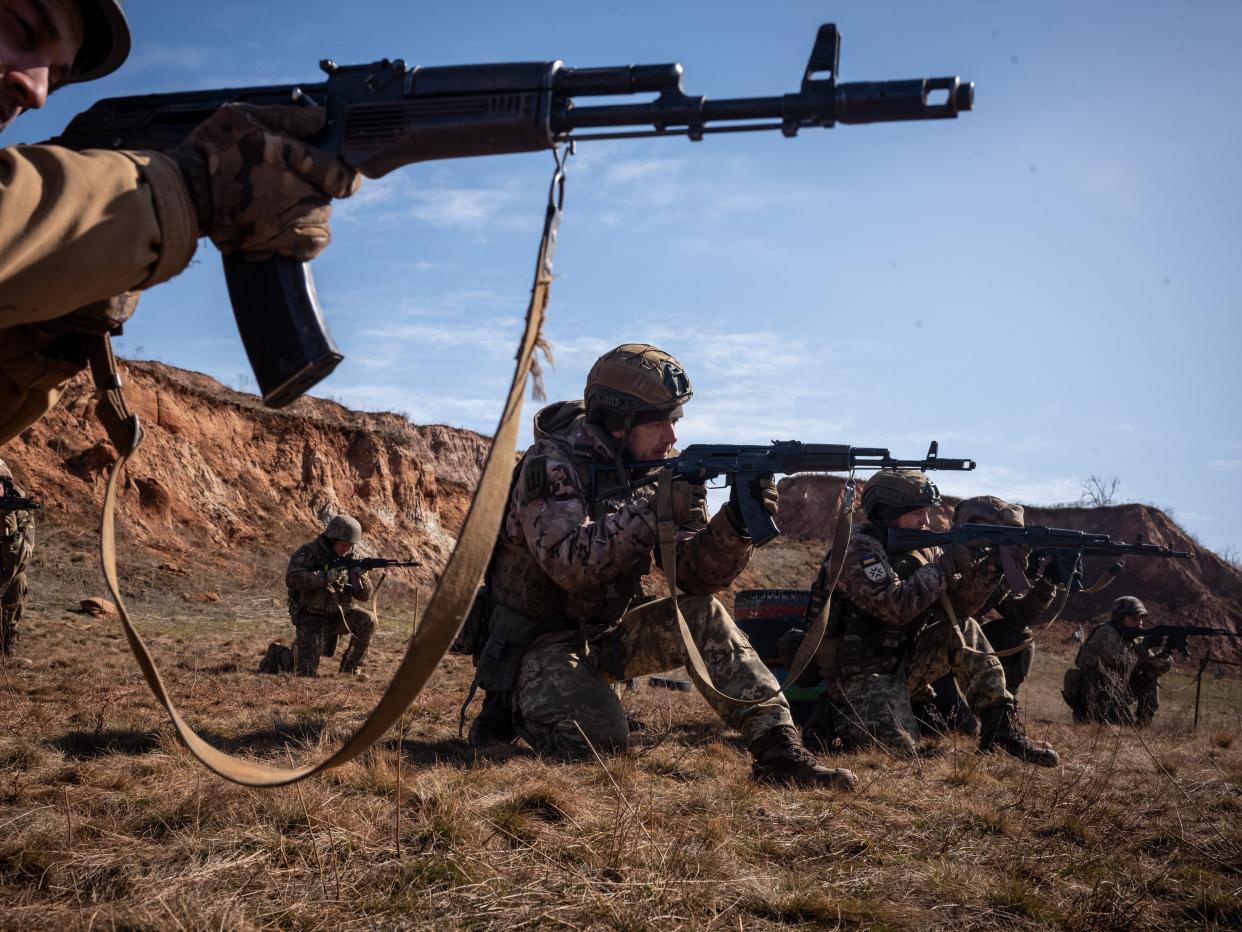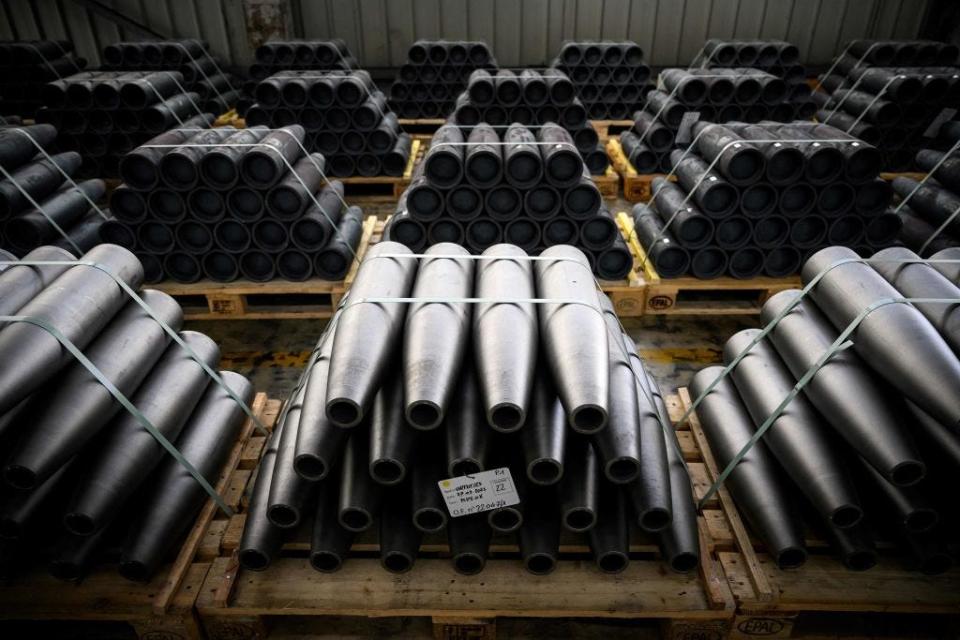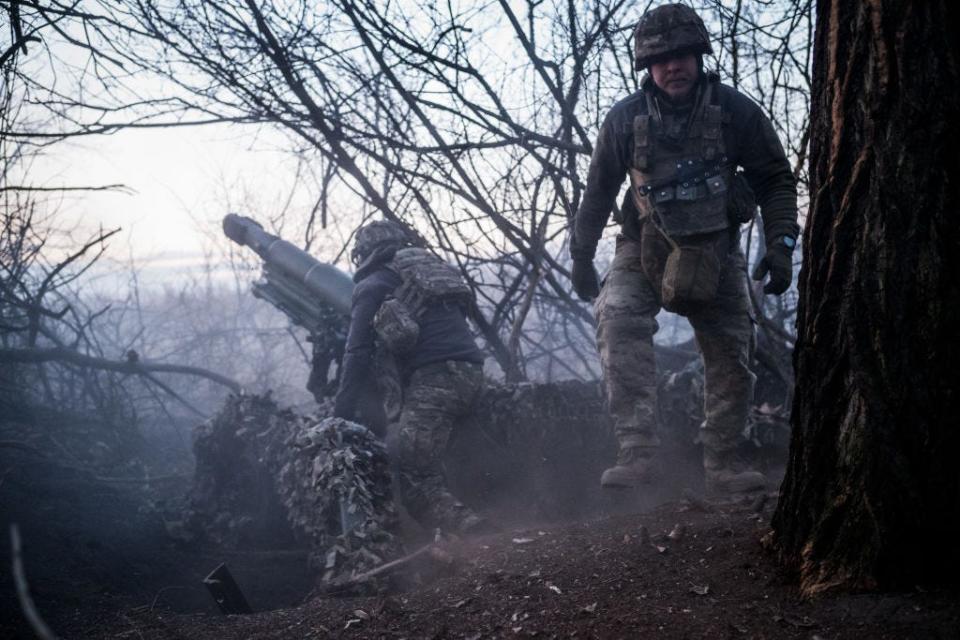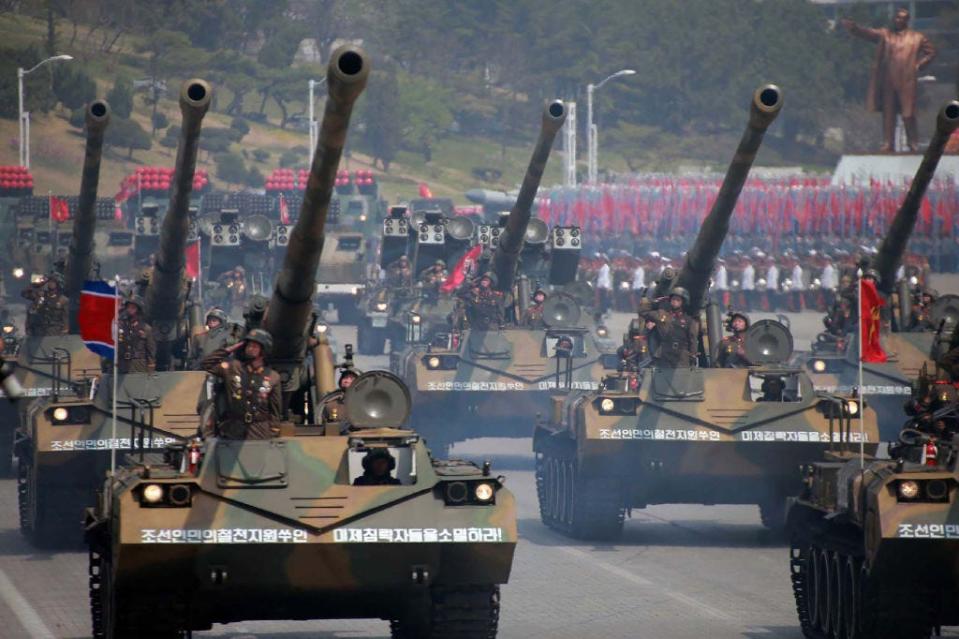Weapons from longtime foes North and South Korea have been fueling opposite sides of the war in Ukraine

North Korea and South Korea have sent weapons to opposing sides of the war in Ukraine.
North Korea's support for Russia puts it in a position to get assistance and test its weapons.
Meanwhile, South Korea is setting itself up as a global arms supplier by sending ammo to Ukraine.
North Korea and South Korea have been fueling opposite sides of the war in Ukraine, positioning themselves as players in this conflict.
Both states have much to gain from their involvement: North Korea's support for Russia strengthens a useful partnership, while South Korea's contributions to the Ukrainian war effort reinforce its role as a global arms supplier. The North also gets to challenge the world order while the South strives to preserve a world where tyrants aren't able to tear down vulnerable democracies.
North Korea's earliest involvement in the conflict is believed to have begun roughly two years ago, when the US accused it of providing ammunition to Russia in September 2022. Last summer, the Russian defense minister visited Pyongyang. And then, last fall, Russian President Vladimir Putin and North Korean leader Kim Jong Un met for a summit on a potential bigger arms deal between the two nations, one that got Russia the ammo it needed to replenish strained stockpiles at a critical moment.
What North Korea received from this partnership is a little more opaque, but speculation has pointed to food and petroleum products, possibly even Russian technologies, as likely trades.
South Korea, on the other hand, has been indirectly funneling artillery ammunition to Ukraine by way of the US, working a loophole through the Yoon administration's restrictions on providing lethal aid.
Last month, Chris Park, a research assistant and the program coordinator for the Arleigh A. Burke Chair in Strategy at the Center for Strategic and International Studies, addressed this situation on CSIS' The Impossible State podcast.
He said that "with South Korea providing artillery shells to Ukraine via the United States and North Korea directly sending weapons to Russia, you get a situation where the two Koreas are engaged in what's essentially a proxy war 5,000 miles away from the peninsula."
While North Korea and South Korea, longtime foes that are technically still at war (the Korean War ended with an armistice rather than a formal treaty), aren't necessarily in this conflict to fight one another, it's still a unique situation that could have reverberations and consequences in Europe, on the Korean peninsula, and in the wider Indo-Pacific region.

Kim and Putin's meeting last fall was noteworthy. It marked the first time Kim had left his so-called "Hermit Kingdom" in four years, and it signaled a turning point in North Korean foreign policy, which had shuttered after the 2019 Hanoi summit with then-US President Donald Trump and was further hurt by COVID-19.
For years, Kim positioned himself as an observer, watching closely as Russia invaded Ukraine and tensions flared between China and Taiwan after former US Speaker of the House Nancy Pelosi visited the island, though it still engaged in provocations of its own.
Coming out of pandemic lockdowns, North Korea is navigating international relations to find the situations that are most advantageous for it.
One example is its close ties with Russia, which are becoming stronger. North Korea has provided Moscow with hoards of weapons, likely including 152mm shells, 122mm rockets, and KN-23 ballistic missiles. Fragments of KN-23s have been discovered in Ukraine since earlier this year, and the Ukrainians have previously found what they suspect are North Korean rockets.
White House and South Korean estimates of just how much ammunition has been sent have varied, but generally, it is a significant amount in the millions. By South Korea's latest estimate, North Korea has sent as many as 10,000 containers.
Arms deals with Russia, another of which could be in the works, are notably also opportunities for North Korea to improve its ammunition production capabilities. The quality and overall performance of the ammunition sent have been called into question.
Producing shells for Russia, or working with Moscow to produce shells, gives North Korea a chance to address inadequacies. Earlier this year, one US official stressed that North Korea was gaining invaluable data from letting Russia use its weapons in a real combat situation, which could help it develop better and more accurate weapons. South Korean officials have expressed similar concerns.
This week, Putin is expected to visit Pyongyang for the first time in almost 25 years for further arms deal discussions. The continued cooperation with Russia could be valuable for North Korea, especially if it can receive support, either economic or military for its own ends.

On the other side of the 38th parallel, South Korea has ambitions of being a global arms supplier and opening up its defense industry for increased international cooperation, making its partnership with the US to supply weapons to Ukraine notably beneficial.
In a CSIS report in March, Park and Mark Cancian, a retired Marine Corps colonel and a senior advisor at CSIS, wrote that South Korea has noticeably upped production of 155mm shells since it indirectly sent 300,000 to Ukraine via the US, which had been revealed in earlier reporting.
The agreement details are not clear, but it appears that South Korea sent ammo to replenish US stockpiles, which was then sent to Ukraine. In return, it's possible the US will replace its stockpile with South Korean-produced ammo.
In May 2023, it was confirmed that South Korean ammo was going to Ukraine by way of the US.
There are limitations, though. South Korea's current annual production rate is only about 200,000 155mm artillery shells a year, and it likely doesn't want to dip into its own stockpile and risk shortages in the face of a conflict with North Korea.
Cancian and Park note, however, that South Korea's vast 105mm stockpile could serve as a sort of stopgap measure.
While 105mm shells have less range and power, South Korea is thought to have around 3.4 million of them stockpiled, and many of them may be expiring soon. Ukraine has the artillery to fire this kind of ammunition.
"The 155 has become the US and really Western standard artillery projectile," Cancian said on The Impossible State podcast. But the 105 used to be standard, and the US is currently sending Ukraine 105s now.
If South Korea can continue to position itself as an arms supplier through the US — or if the Yoon administration waives its policy and provides lethal aid directly to Ukraine, which it has said it will consider in the event of large-scale attacks on Ukrainian civilians, which have been occurring since the beginning of the war — it might stand to gain much from the war in Ukraine, including increased investment in its defense industrial base.

Both North Korea and South Korea also have ideological reasons to be involved in the war in Ukraine.
For North Korea, supporting Putin's belief that Ukraine is part of Russia strengthens the partnership between Pyongyang and Moscow and gives Kim an opportunity to challenge and push the limits of the US-led world order for its purposes.
Experts have previously assessed that North Korea — along with Russia, China, and Iran — all have reasons to align in an "axis of upheaval," reshaping the world to their liking.
South Korea, on the other hand, may see in the war in Ukraine reflections of tensions in its region and the potential for a conflict with North Korea or a possible Chinese invasion of Taiwan.
Park said on The Impossible State that "it's fair to say that South Korea favors a world in which conquest is discouraged and vulnerable democracies are not abandoned to tyrants next door."
That said, the Yoon administration is unlikely to move towards providing Ukraine lethal aid directly due to concerns over reactions from China and Russia. South Korea has long had close trade relationships with China in particular and remains concerned about how Russia could influence or empower North Korea, risking war on the peninsula.
Read the original article on Business Insider

